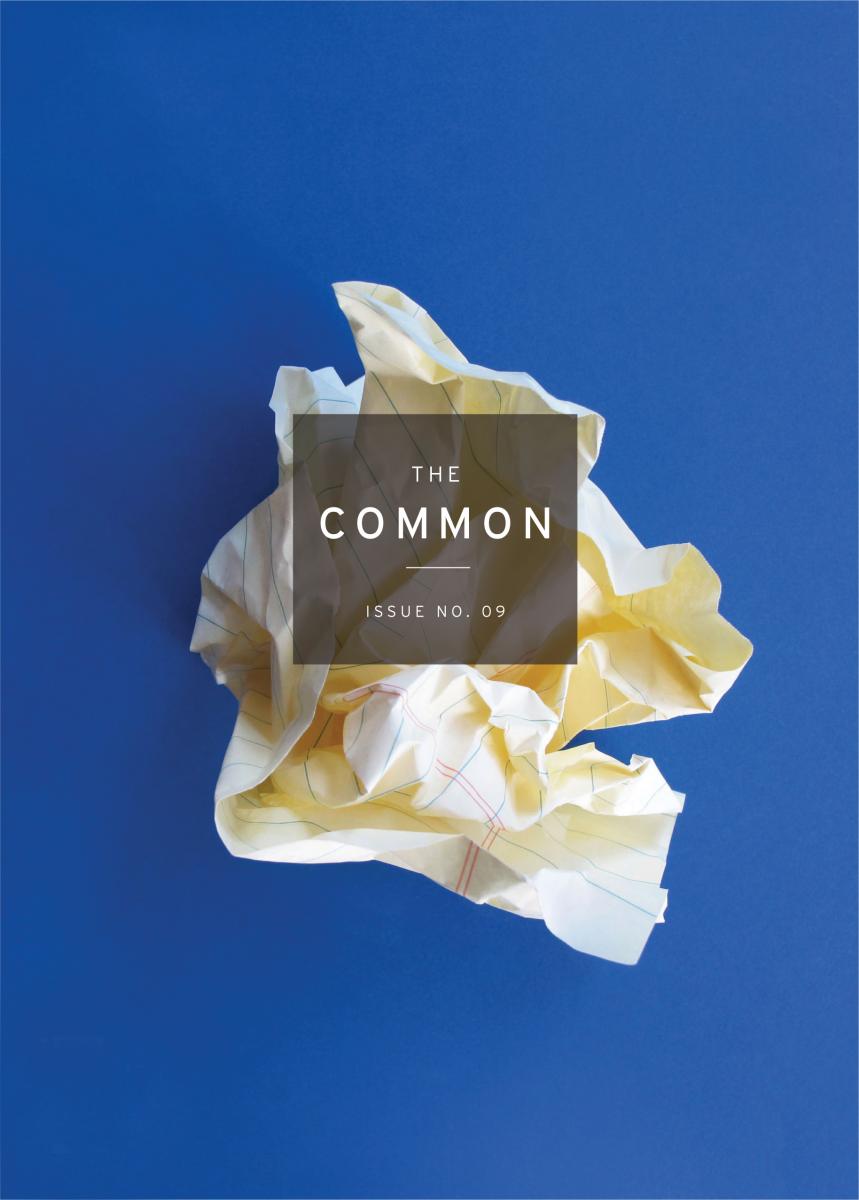

The Common, a literary magazine based at Amherst, released its ninth issue this week. The Common is devoted to a “modern sense of place,” a happily broad mission that I suspect all of us can in some sense relate to. As young adults at Amherst, we’re all away from home in an environment that’s devoted to encouraging each of us to find our own sense of place both here and beyond our college years. These early adult years are no more than an eddy in a tide pool, a brief disturbance of the wider waters of life. Yet the time we spend at Amherst and the knowledge we amass here will inevitably become a key part of our identities, and we desperately cling on to the memories of our short time here.
If you feel this way, then editor-in-chief Jennifer Acker‘’00’s introduction to the magazine might resonate with you. Acker writes about her complicated relationship with the Spanish language, and about the experience of learning and forgetting. “Realizing the scale of what I’ve forgotten is depressing, she writes. “Competency and knowledge are not supposed to abandon you like lovers do.” Acker follows this with a question that most of us will face at some point in the future: “How do we learn when we’re no longer students and have not chosen paths as scholars?” Acker’s thoughtful essay begins a diverse collection of stories, poem, essays and images that all relate in some way to the magazine’s “sense of place” mission.
Some of the best pieces in this issue were from writer Luis Muñoz. Muñoz’s two pieces in the ninth issue of The Common — “What Always Pulls at Me” and ”Poetry Never Stops Defining and Redefining its Terrain”— are heartfelt, non-fictional and essayistic parables for his poetics. His writing feels urgent and inevitable, both for the reader and for him. “What always pulls at me, like a persistent hand tugging on my shirt sleeve or at my pant leg, is the poem I haven’t written,” he writes. This “pulling” absorbs the writer’s experiences from daily dramas, television, and common language, only stopping once we find “fresh nuances, shiny threads, newly unsatisfied necessities that it feels are urgent and intimate.” Between what we know intellectually and emotionally, Muñoz writes that this “zone of intersection” allows the poet to become a “the hunter of symbols” and “of correspondences.”
Another standout in the magazine is Sujata Shekar’s story “Between the Lines.” The main character, Bo Htet Aung, has worked as the chief of Myanmar’s censorship office for 20 years, but today he has to announce the end of the country’s tradition of censorship, overturning 48 years of routine regulation. At one point in the narrative, Bo parks his Nissan Saloon outside his usual teashop, where he sips his cup of tea while sitting in the driver seat. Bo’s job can be boiled down to reading between the lines, “parsing the words and filtering the intentions of a long line of hacks and journalists.” Now, this man of careful detail wants to take his skill of dissecting the words of others to the realm of fiction, a space that Bo refers to as a natural next step. One of the strengths of this story is its narrative style. Through free indirect discourse, Shekar shows us how this story is as much about Bo as it is about the narrator. This curious narratorial position, which never completely resembles that of a character or a proper storyteller, creates a space in which the consciousness of narrator and a protagonist seem to blend.
Writers in The Common often present plain speech in a highly charged manner that has the power to pull at the reader. In “Between the Lines,” we read about “the smells of the teashop landed like slaps to his face.” Peter Jay Shippy’s “The Post-Graduates,” is a poem about a world of “foamy moustaches and umlaut eyes.” Edie Meidav’s “The King of Bubbles” is a tragicomic tale of impotency set in a world with a “mildewed dank warren of a health club where one’s point in the family of man shows itself within the locker room’s flapping paps, a hearty male enfolding of good cheer, no bull-whip towelslap.” Throughout the magazine, writers use simple diction to conjure up vivid sensory images.
This kind of vivid imagery is typical of many writers in The Common, who transport their readers everywhere from Vermont to Mumbai. Reading The Common is an enjoyable and immersive sensory experience, and it’s well worth spending an afternoon with this smart and thought-provoking literary magazine.